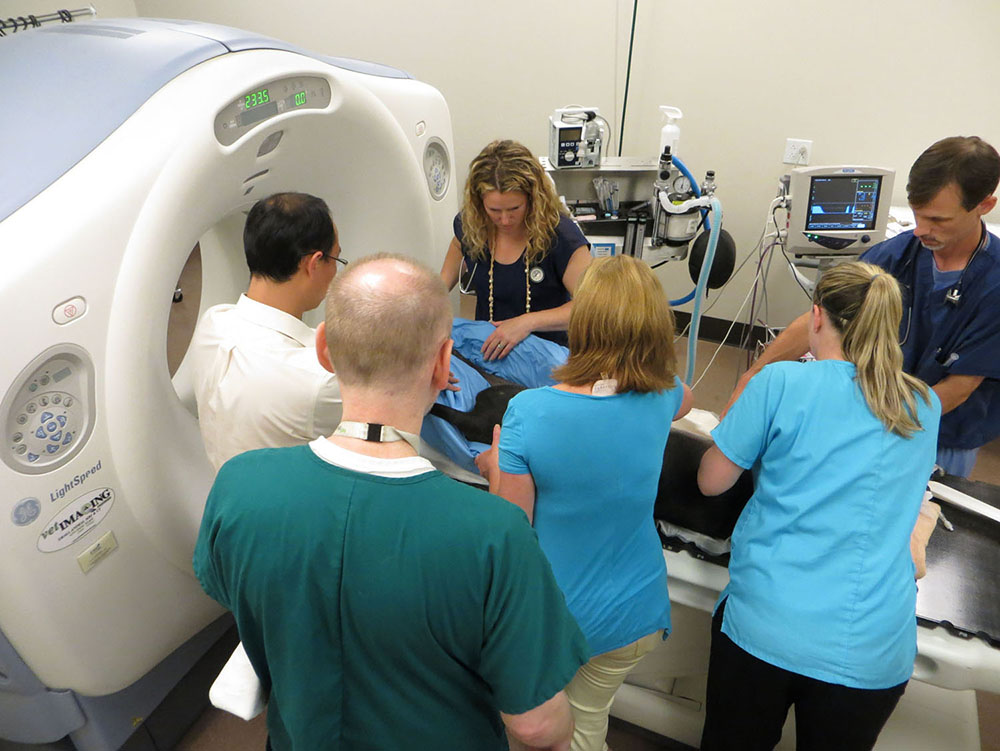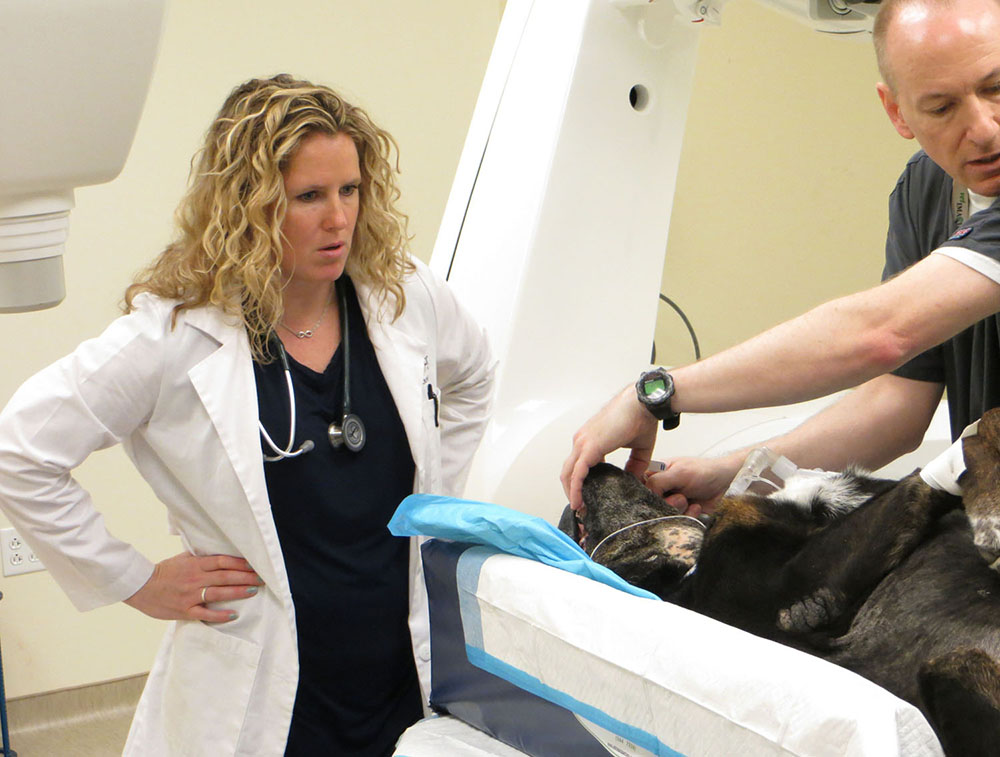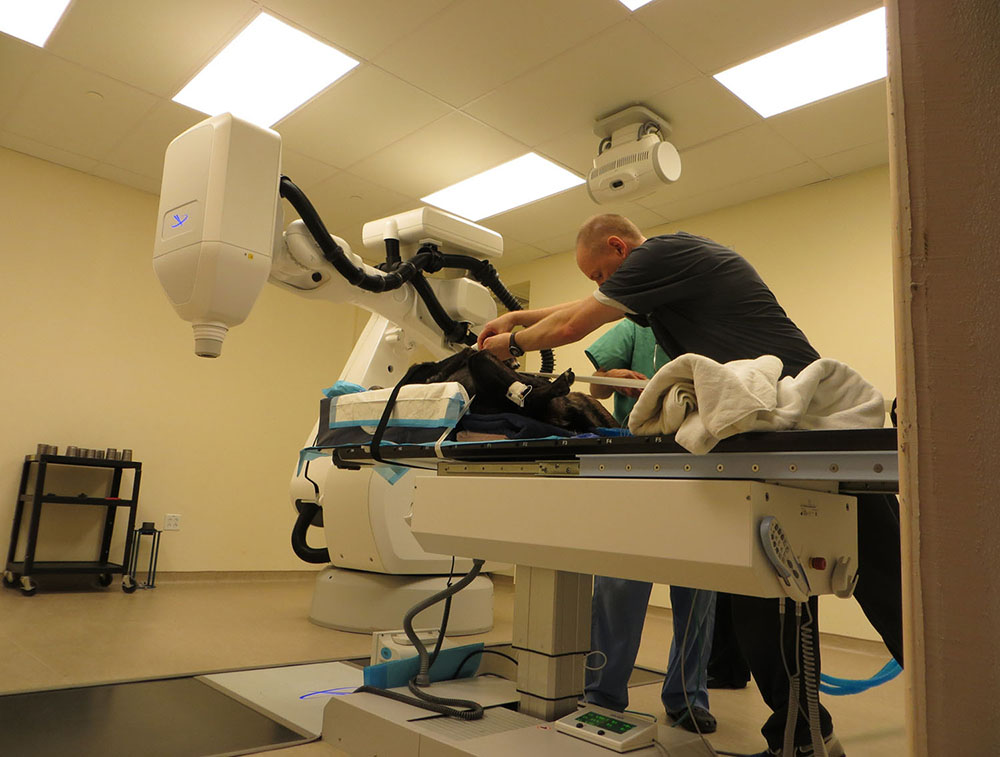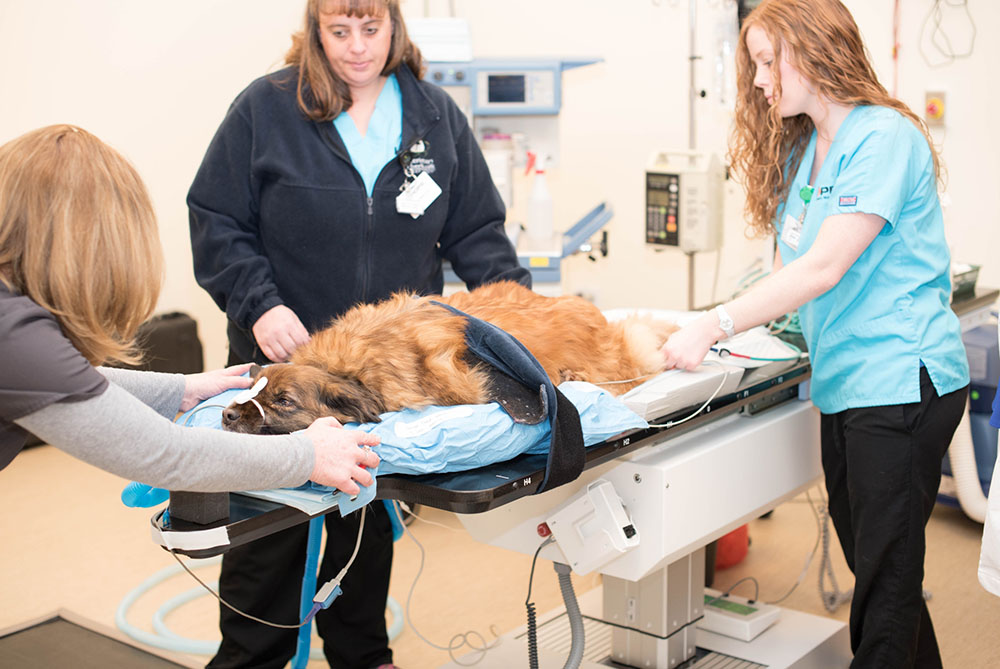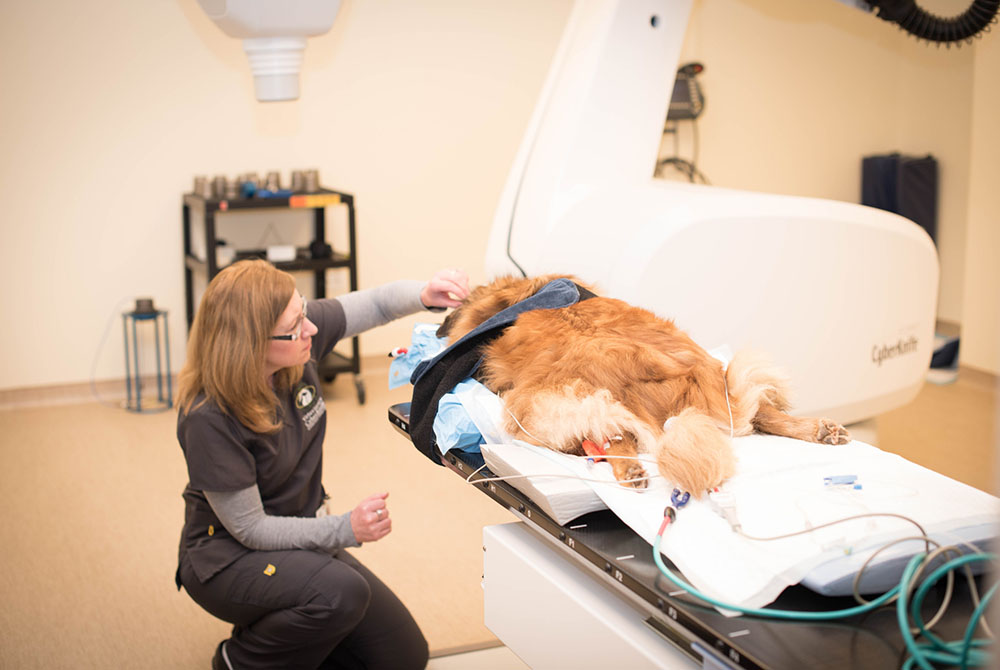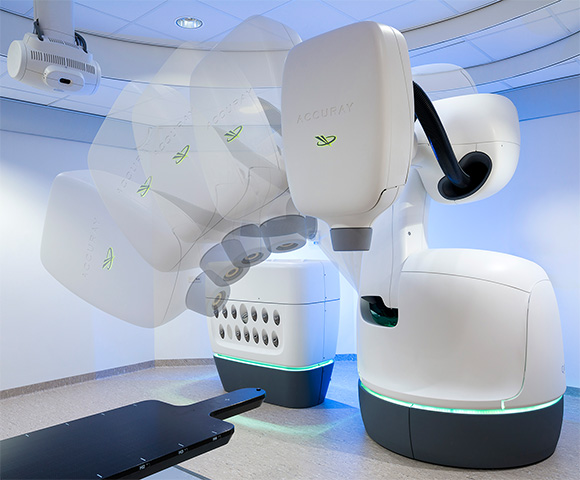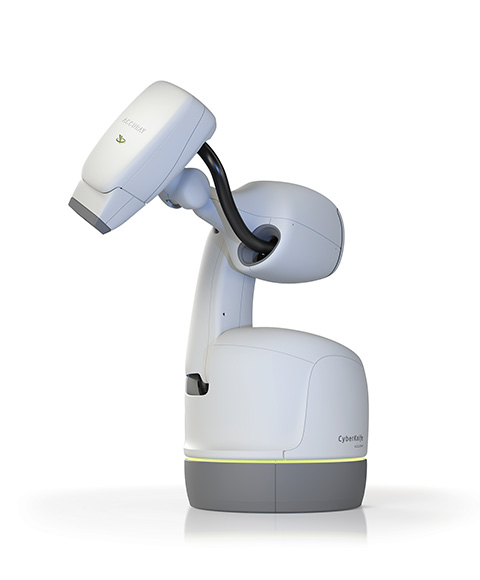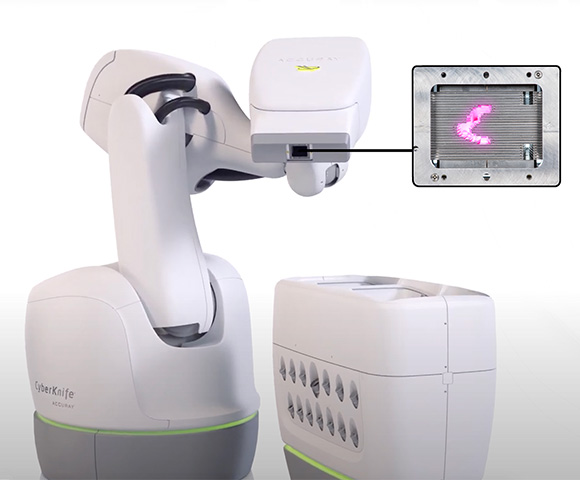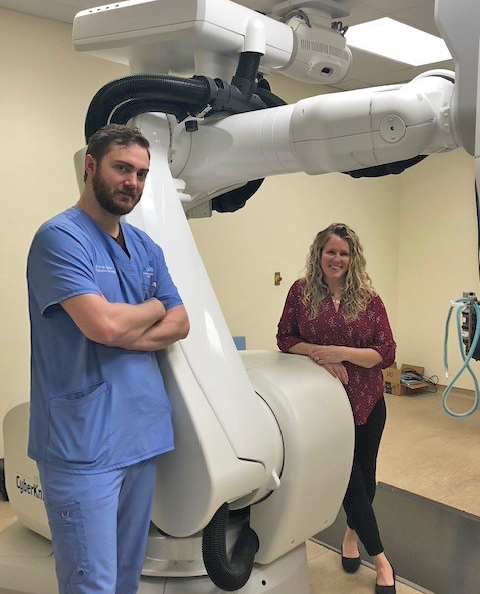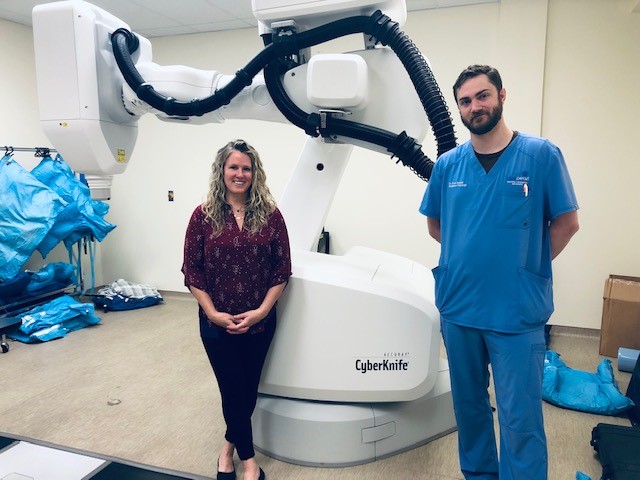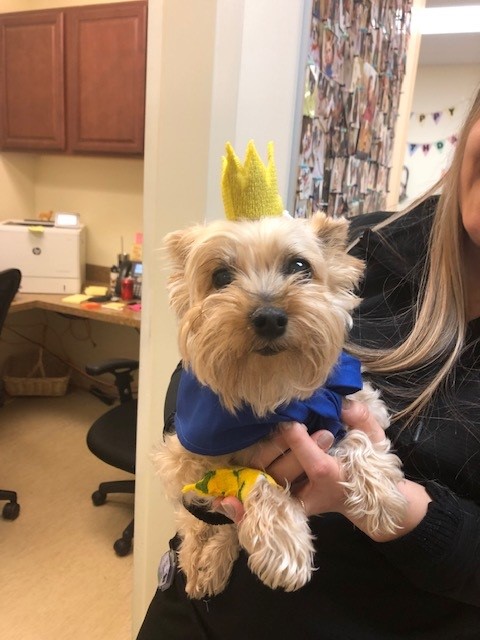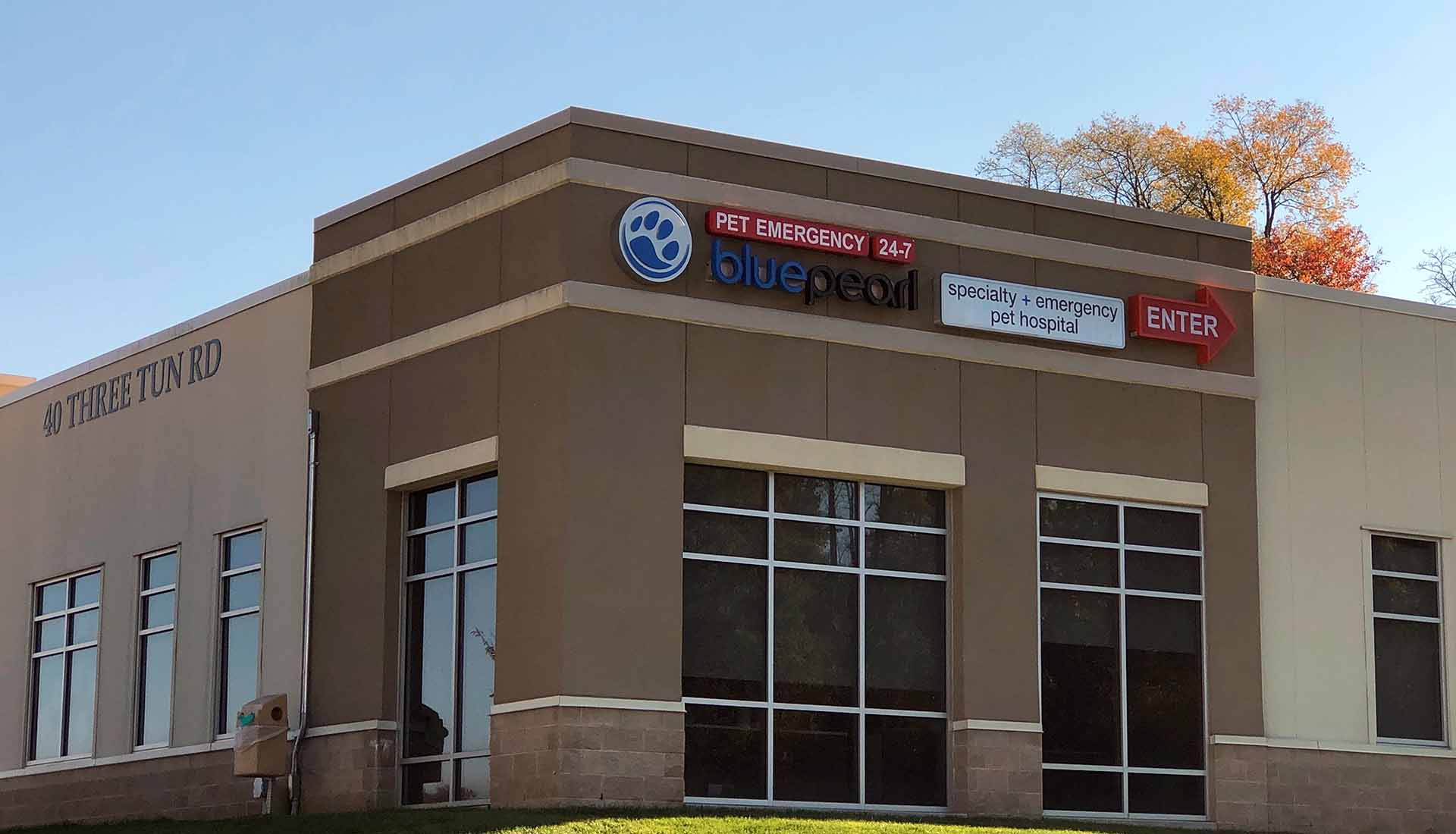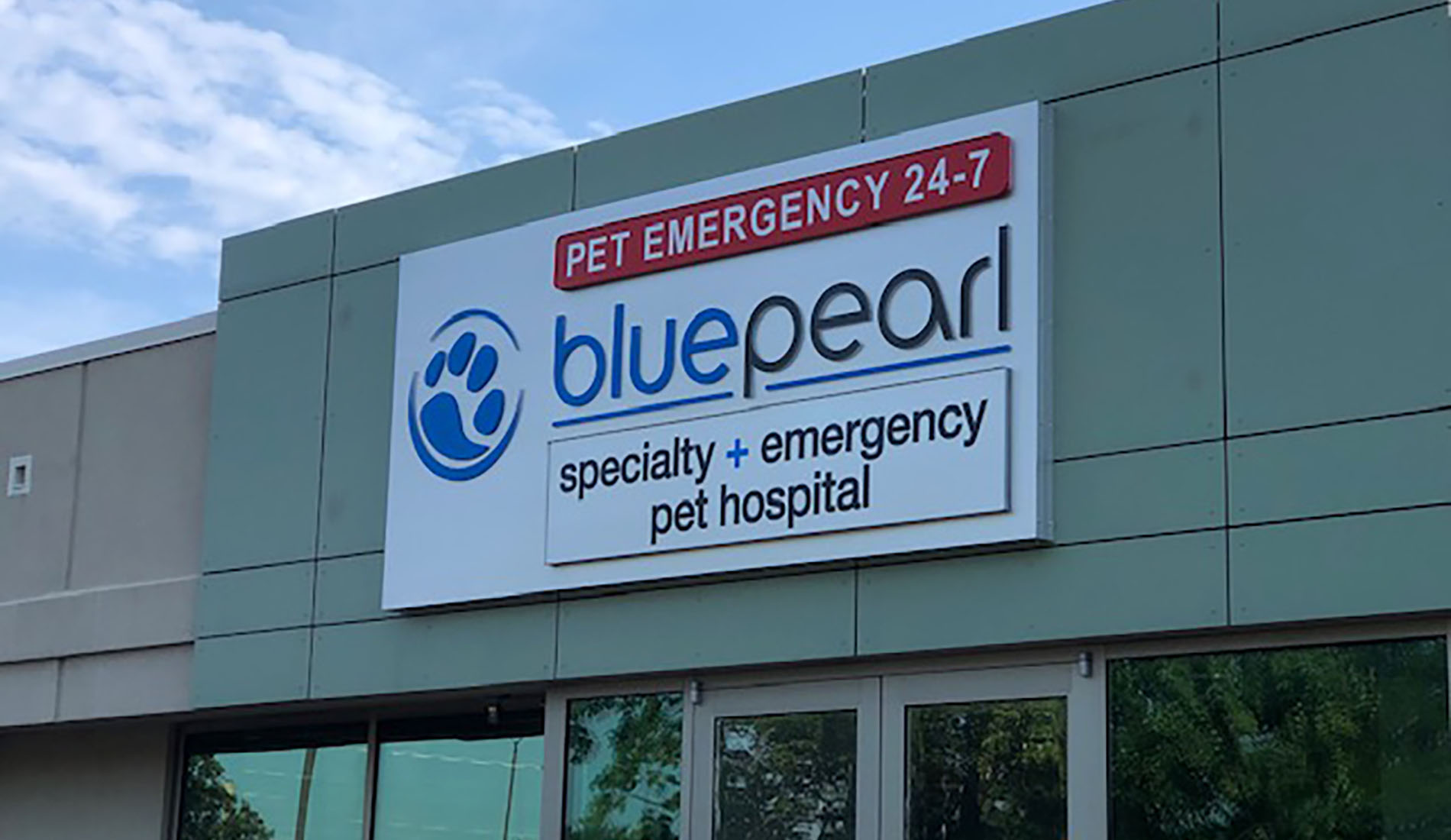Center of Focus: BluePearl Cyberknife Cancer Center.
Our services.
Our
veterinarians.
About our BluePearl CyberKnife Cancer Center – Malvern.
Frequently asked questions about radiation oncology for pets.
Most pets will require advanced imaging, such as computed tomography (CT) or magnetic resonance imaging (MRI), to allow radiation to be targeted specifically to the tumor while avoiding the healthy tissue around it.
Typically, our radiation oncologists will create a unique 3D plan using proprietary 3D treatment planning software and your pet’s CT or MRI images. Not all pets will require a 3D treatment plan – it largely depends on their specific tumor and anatomy. Our team will discuss if your pet needs a 3D treatment plan during your initial consultation.
Conventional radiation and CyberKnife treatment provide a pain-free, non-surgical option for patients with inoperable or surgically complex tumors. The procedure is non-invasive, meaning no incision or cutting occurs and no recovery time is needed.
Often, our clients will report that their pets seem more comfortable after radiation treatments, which may result from reducing the tumor’s size, which decreases tumor-related side effects.
Most radiation treatments are performed on an outpatient basis. Pets usually need to stay at the hospital for about two to three hours but may stay for up to eight hours for treatment. The length of stay depends on the type of radiation therapy administered to your pet.
The side effects associated with any radiation treatment depend on the number of treatments and the location of the tumor. Typically, side effects consist of temporary inflammation of any tissue surrounding the tumor site, but inflammation usually resolves within two weeks of the completion of treatment.
Side effects with CyberKnife are typically very minimal to absent, which is one of the significant advantages of CyberKnife therapy over conventional radiation therapy. However, not every pet is a candidate for CyberKnife, nor is it the right treatment for every type of tumor.
Any side effects ultimately depend on the location of your pet’s tumor and will be discussed before treatment.
CyberKnife radiation therapy is so precise and accurate that we can deliver an entire dose of radiation in far fewer treatments. The surrounding healthy tissue receives minimal radiation, significantly shortening the time required for treatment.
It is important to note that cancer biology is complex and some tumors, such as pituitary and urogenital tumors, may respond better to more prolonged courses of radiation therapy than to CyberKnife. Your pet’s oncologist will review all treatment options with you to decide what course of action is best for your pet.
The effects of radiation treatment vary and may occur gradually and over time. Depending on your pet’s medical condition, the timeframe can range from days to months or years. Some tumors may decrease in size more slowly than others, while others may stop growing.
Four to six months after radiation treatment, patients may have a repeat CT scan to identify if the tumor treated was reduced in size.
This will be determined based on the tumor’s location, the dose of radiation previously received and the length of time after initial treatment. It is important for our radiation oncologists to have access to your pet’s medical records and radiation treatment records so the appropriate radiation protocol can be prescribed.
The cost of radiation treatment varies based on the type and location of the tumor and the number of fractions needed. During your initial consultation with the oncologist, you’ll receive an estimate for treatment, including advanced imaging.
Most veterinary insurance companies cover a portion of radiation treatment, depending on your pet’s policy. Don’t hesitate to contact us for more information about fees or using pet insurance.
We understand that transporting your pet to appointments can be difficult with work and family obligations. For our patients who travel to our hospital from another state, we work with a local hotel, Sheraton Great Valley, which is less than two miles from our practice and is very pet-friendly. The hotel offers a shuttle service to BPVCCC and a discounted room rate for our clients.
Please contact our office for more information about transportation, boarding and hotel accommodation options.
Unlike human radiation therapy, we cannot rely on our patients to stay perfectly still during treatment. Anesthesia is unequivocally the least stressful option to ensure there is no movement during radiation.
The length of anesthesia time will vary depending on the type of radiation treatment your pet is receiving, but it can range from just a few minutes to two hours. A veterinary nurse dedicated to overseeing your pet’s anesthesia continuously monitors your pet’s vital signs throughout treatment.
In most cases, your primary veterinarian will be able to refer you to a specialist. Our sister hospital, BluePearl Pet Hospital Malvern, is a 24-hour specialty and emergency hospital located directly next door with a team of veterinary oncologists on staff.
You also have the option to research online. For your convenience, we’ve listed two websites below:
- ACVR – American College of Veterinary Radiology
- ACVIM – American College of Veterinary Internal Medicine
We recommend the Animal Cancer Foundation’s resources for learning more about nutrition tips, clinical trials, and other resources for pets with cancer.
You are always welcome to call us for assistance in finding the best pet oncologist in the Chester County area.
Testimonials.
“We saw Dr. Evan Ducker for a consultation with our dog Grizzly. Grizzly was being treated with the melanoma vaccine and had previously had three surgeries to remove melanoma cancer from his mouth. Luckily, his cancer had not spread, so our next step was radiation to stop reoccurrence.
Dr. Ducker and the CyberKnife staff were responsive, warm, encouraging, knowledgeable, kind and patient. We were apprehensive about the treatment more than the costs since Grizzly was 13 at the time. Dr. Ducker was so friendly and actually acted like he liked animals (other hospitals’ specialists were very cold and academic). He called us with a plan of treatment several times. He said this would be Grizzly’s best shot to maintain his quality of life.
Well, we got weekly updates from Dr. Ducker during the 8 weeks treatment. We got lots of follow-up texts from the staff regarding his aftercare. Dr. Ducker even called our primary vet to discuss his care. We just stopped back to see him and it’s been 14 months post treatment and Grizzly is still with us.
It was hard, but the compassion and care we experienced will never be forgotten. Thank you for giving us hope and treating us with so much kindness and respect.”
–Maria P.

